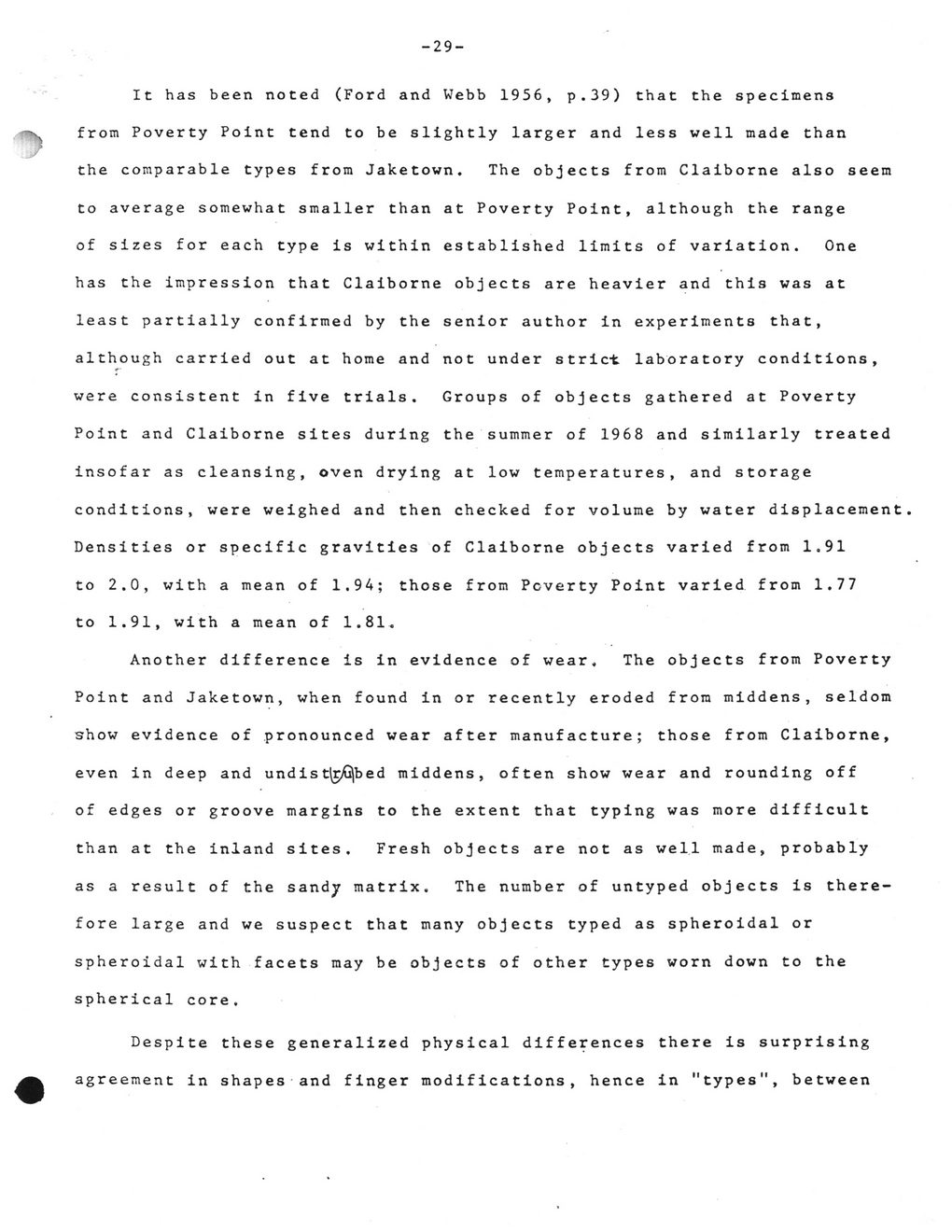This text was obtained via automated optical character recognition.
It has not been edited and may therefore contain several errors.
It has been noted (Ford and Webb 1956 , p.39) that the specimens from Poverty Point tend to be slightly larger and less well made than the comparable types from Jaketown. The objects from Claiborne also seem to average somewhat smaller than at Poverty Point, although the range of sizes for each type is within established limits of variation. One has the impression that Claiborne objects are heavier and this was at least partially confirmed by the senior author in experiments that, although carried out at home and not under strict laboratory conditions, were consistent in five trials. Groups of objects gathered at Poverty Point and Claiborne sites during the summer of 1968 and similarly treated insofar as cleansing, oven drying at low temperatures, and storage conditions, were weighed and then checked for volume by water displacement. Densities or specific gravities of Claiborne objects varied from 1.91 to 2.0, with a mean of 1.94; those from Poverty Point varied from 1.77 to 1.91, with a mean of 1.81. Another difference is in evidence of wear. The objects from Poverty Point and Jaketown, when found in or recently eroded from middens, seldom show evidence of pronounced wear after manufacture; those from Claiborne, even in deep and undisturbed middens, often show wear and rounding off of edges or groove margins to the extent that typing was more difficult than at the inland sites. Fresh objects are not as well made, probably as a result of the sandy matrix. The number of untyped objects is therefore large and we suspect that many objects typed as spheroidal or spheroidal with facets may be objects of other types worn down to the spherical core. Despite these generalized physical differences there is surprising agreement in shapes and finger modifications, hence in "types", between

Walden 036